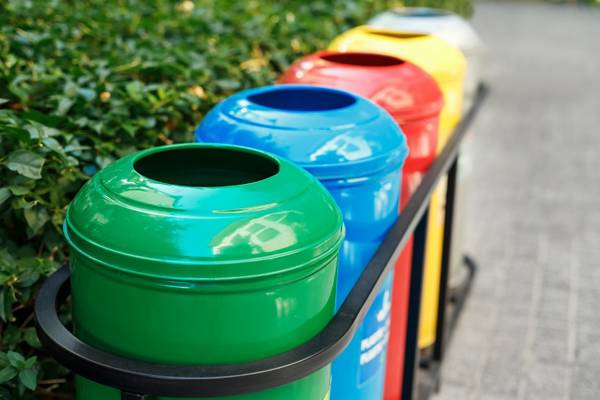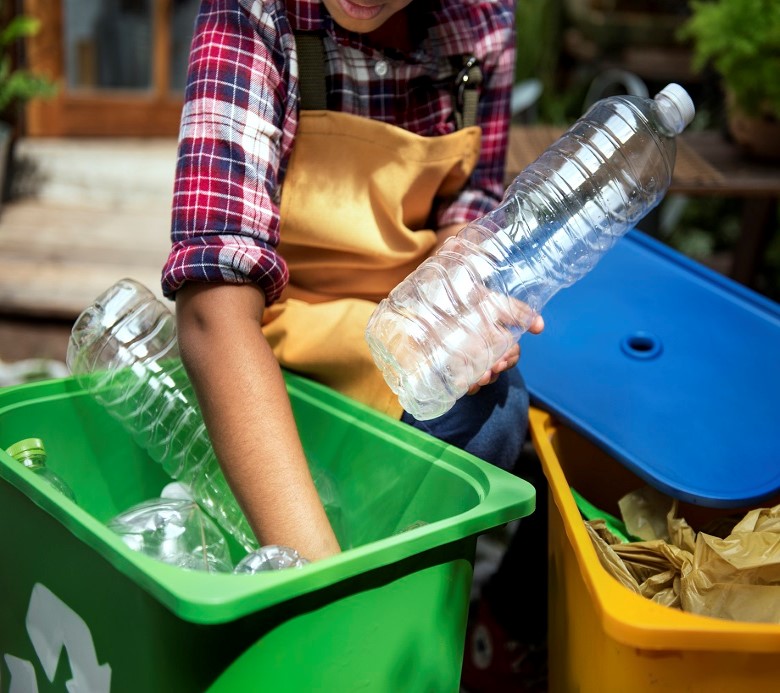Recycling Myths, Busted
Recycling myths are everywhere. The truth about recycling is often obscured by misunderstanding and hearsay. This is then turned into myths, which quickly gain traction – particularly online.

About Jonathan Edmunds: With over 10 years’ experience in the sector, Jonathan focuses on key recycability issues, ensuring that all our activity contributes to making a more sustainable and circular world.
In truth, there needs to be a better relationship between consumers and the recycling industry. Attitudes like “recycling makes no difference” are still loud and much anti-recycling rhetoric comes from this.
Below, we’ll dig into the truth about recycling by breaking down some of the biggest myths.
Myth 1: The Recycling Logo Means It Will Be 100% Recycled
What does a recycling logo look like? If you asked a selection of people, you may get different answers. Some will say it’s a green, circular logo with arrows, others will mention a black or green triangle.
That’s because there are different types of recycling logos on certain products, and they each mean something different. Consumers will look for one of these logos and assume it means the item is recyclable. This is an easy mistake to make thanks to the number of logos in circulation.
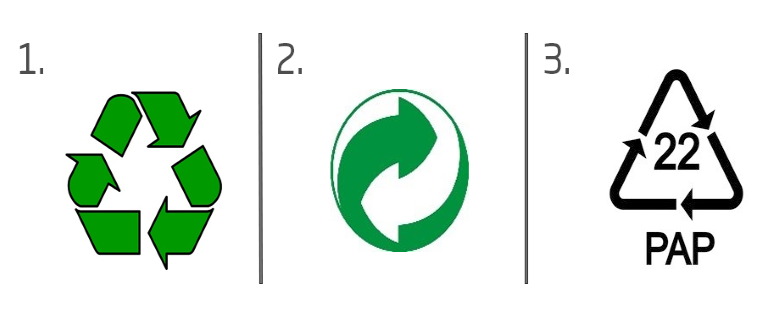
The Mobius Loop (1) is the most popular logo. The majority of people understand this to mean that a product is recyclable, but it only indicates that it has recycling potential.
It does not mean that something is recyclable, nor that it will be recycled.Sometimes, the Mobius loop comes with a percentage. This indicates the percentage of the item that contains recyclable materials. People sometimes assume it’s how much of the item is recycled.
The Mobius Loop is commonly confused with the Green Dot (2). It looks similar to a Mobius loop, but it only indicates that the packaging producer has paid towards the recycling or recovery of the packaging. It does not mean the package will be recycled or is recyclable.
Some logos have numbers inside them. These numbers refer to the item's packaging material (3). For example, numbers 20 to 23 means paper-based packaging, while plastic resins are numbers 1 to 7.
To be sure something is recyclable, read the package carefully. The linear notes should indicate whether something is fully, partially or non-recyclable, as well as whether it should be put in your household recycling.
Myth 2: Materials Can Only Be Recycled Once
The recycling journey is often understood in a binary fashion: someone makes an item, it’s used, then it's recycled. However, the process is not that simple. Certain items can be recycled more than once. For example, did you know how many times paper can be recycled? Paper has the potential to be recycled up to 25 times.
Our Closed-Loop, box-to-box model revolves around our commitment to keeping materials in use for longer. This model means that the cardboard we collect from a variety of sectors is recycled and turned into new cardboard boxes in our packaging division, creating a real closed-loop solution for our customers.
This process allows us an average of 80% recycled fibre in our packaging, with only a small amount of virgin fibre added. Our business model – and the recycling industry – is based on the fact that items are constantly being recycled. If it was a one-and-done system, then the recycling industry simply wouldn’t work.
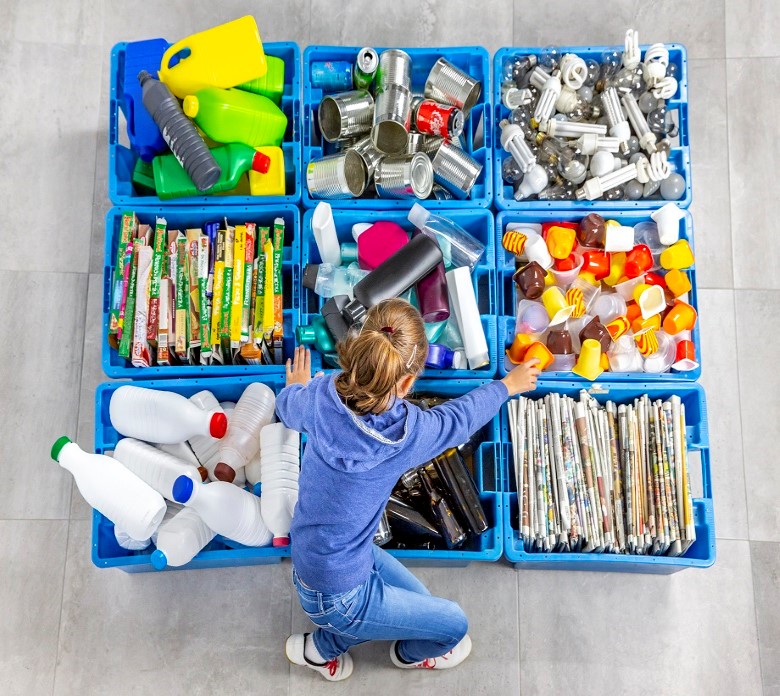
Myth 3: You Can Put Non-Recyclable Materials In The Recycling “Just In Case”
“Wishcycling” is a common issue. Too often, consumers assume putting something in the recycling “just in case” is a good thing. However, while well-intentioned, this practice has big consequences.
Adding non-recycling materials to any recycling stream will deem it as “contaminated”. Sorting can remove these items before recycling, but this has to start with the consumer. If a volume of non-recycled materials is found, then significant yields can be lost.
The same occurs when recycling streams are mixed. For example, let’s say some recycled paper winds up in a plastic recycling stream – this can cause big issues for recyclers. Plastic bottles are commonly mixed up with paper and cardboard. Paper mills can’t recycle plastic, and plastic reprocessors can’t recycle paper.
Sorting facilities and Materials Recovery Facility (MRFs) do exist. These can sort out contaminated material on behalf of recyclers, but this increases costs, takes time, and there will usually be a loss of recyclable materials in the process. This is why we support source segregation to reduce the chance of contamination and increase yields.
According to our research, 89% of households include items in their recycling that aren’t yet recyclable. This means the industry needs to work harder to put this myth to bed and outline what can and cannot be recycled.
Myth 4: Everything Put In The Recycling Is Recycled
The contamination issue is one cause of efficiency loss in the recycling industry. As well as this, some items don’t end up being recycled because they are simply too difficult to process.
Even if the material is collected without contamination, there still needs to be market and recycling capacity to handle it. Recycling is a demand-driven industry and this demand is often seasonal. It can be affected by factors like legislation and geography. There also needs to be a link between the country where the material is collected and where it is processed.
Since it’s demand-driven, market forces can affect recycling. If the market is weak, hard-to-recycle items can quickly become surplus to requirements and will be sent to landfill or incineration. For example, in the United States, cities began to burn recycling after some international market changes.
Overall, there needs to be a better understanding between the consumer and the industry about how recycling works and that, sometimes, it’s unfortunately out of the hands of the consumer.
Thankfully, it’s not all doom and gloom. These events rarely happen, and the vast majority of recyclable materials are recycled. Innovations from the industry are happening all the time, too.
An example of hard-to-recycle items are coffee cups. The presence of microplastics in coffee cups makes them difficult to recycle, leading to some of the recycling industry leaving them behind. It’s why innovations such as our Coffee Cup Drop Box are so important, and why we collectively need to keep recycling as much as possible.
Myth 5: Items Are Only Recycled When They’re 100% Clean
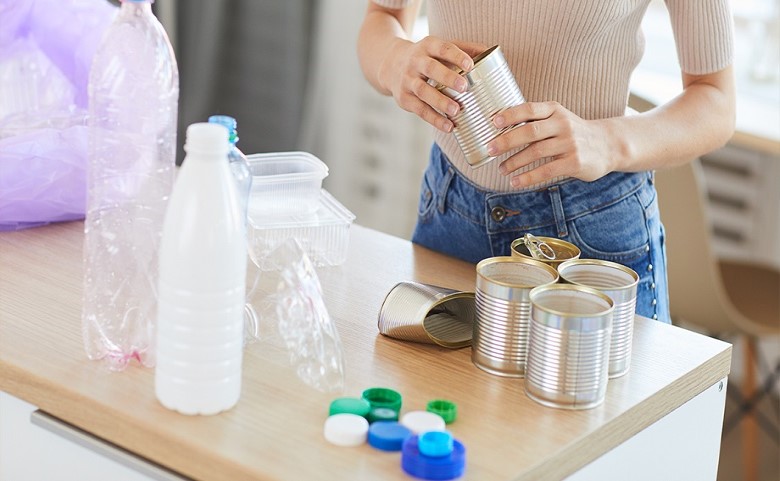
In an ideal world, all materials sent for recycling should be clean. The advice is to clean all recycling thoroughly before adding it to your recycling bin. However, in truth, a small amount of liquid food residue can be tolerated.
Recyclate should be free of any “free-moving 3D food”. This means if there is a bit of sauce or oil on the packaging, the item can still be recycled, as long as it's minimal. However, solid food means it cannot be recycled.
So, why is recycling still difficult if food is present? Essentially, food contaminates the paper-making process and, potentially, the end product. This reduces the quality required for most industries. The presence of food also attracts pests and vermin during the collection and recycling process, which is a health and safety hazard for both workers and consumers.
Our advice remains the same: make sure to remove obvious food content from items and give them a quick rinse under the tap. Packaging almost always has instructions on how to prepare an item for recycling, too, so adhere to that.
Delivering Recycling Solutions That Work
So, is recycling a sham? A waste of time? The answer is a firm no. At DS Smith, we’re constantly seeking to better the relationship between the consumer and the industry, drive education and provide innovative solutions to businesses.
By breaking down myths and being transparent with the truth about recycling, we can collectively make big steps to combat the climate crisis and deliver better value waste solutions.
